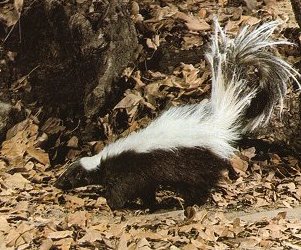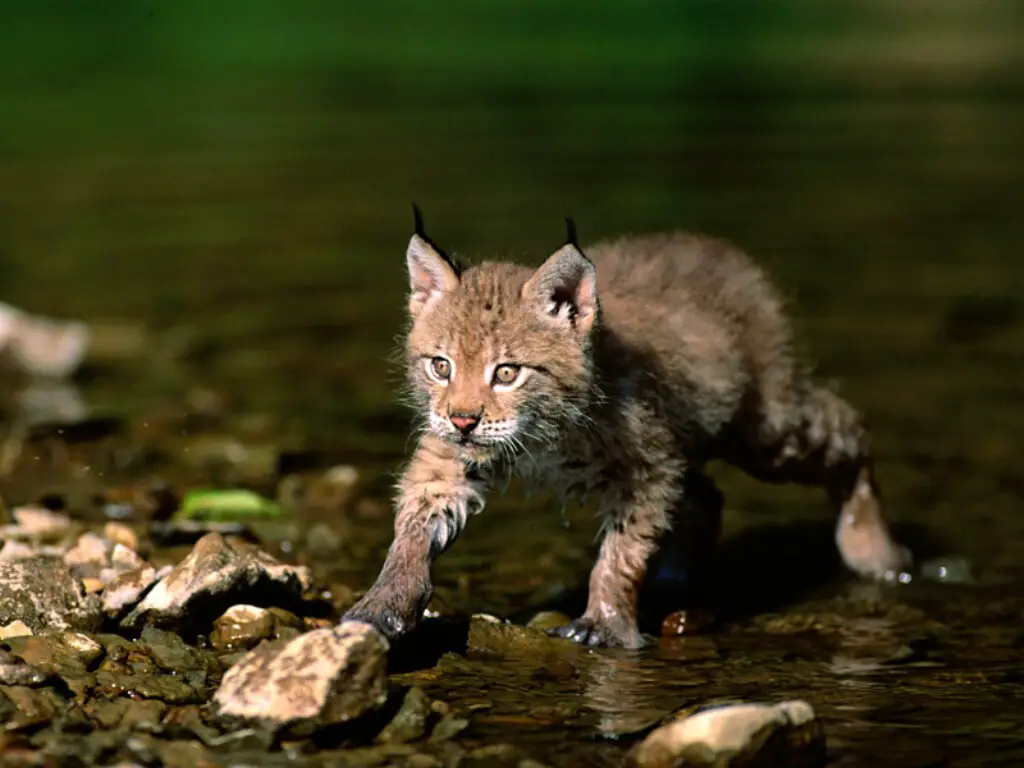Striped Skunk
Skunks are an animal well known in the US and elsewhere in the world for their method of self protection which is to emit a strong noxious smelling odor.
They are mammals, belonging to the Carnivore order, and there are eleven different kinds of skunks living in areas as diverse and the United States, Canada, Indonesia and China.
They can range in size from about 15 inches up to about 3 feet long and will weight a pound up to as much as 18 or twenty pounds.

Skunks can give off an odor that actually causes temporary blindness
Skunks have long bodies, which are very well muscled and have very long front claws that help them to dig.
Their fur is black and white with a stripe across the back altough some skunks may be deep brown or even gray, and a few have been found that are completely cream colored and lack the stripe, even in the striped skunk category. They have a single thick stripe across back and tail, two thinner stripes,on the sides, and a few have stripes on their legs.
It is a very distinctive animal even aside from the scent.
Skunks are omnivorous, eating both plant and animal materials, and will change their diet as the seasons change and different foods become available to them. They will eat insects, larvae, earth worms, as well as eggs, berries, roots, leaves and may also scavenge the kills of other animals.
In urban areas they will also try to get indoors and will eat pet food or nearly anything that is found.
Pet owners of cats, may find a skunk working its way into a garage or basement where pet food is kept.
Skunks tend to be gluttons and will eat nearly anything and as muc of it as they can get.
Although they have excellent senses of smell and hearing they have very bad vision, and can’t see anything that is more than three or four feet away from them, which makes them prime candidates for roadway accidents, which is in fact how most of them are killed.
Roughly half of their deaths are caused by humans and because of this, in the wild they tend to be very short lived, with most of them not making it past three years, although in captivity they may live as long as ten.
Breeding usually takes place in early spring when the female will make a den, where she has four to six young skunks which are usually born in May after a gestation of about 2 months. The young are called kits.
When they are born they are furred, but only a very thin soft layer and are blind and deaf.
It takes about three weeks for the kits eyes to open and their fur to come in.
The male skunk takes no part in raising them and will often kill them to bring the female back into heat.
“A common and amusing scene in late spring and summer is a mother skunk followed by a line of her kits. The kits are weaned after around two months.”
The infants will usually stay with their mother for about a year, when they leave to mate on their own.
Mother skunks are more than protective and atthe first sign of danger will usually spray.

A skunk can spray accurately up to 15 feet
According to scientists, ” Skunks have two glands, one on either side of the anus, that produce a mixture of sulfur-containing chemicals (methyl and butyl thiols) that has a highly offensive smell that can be described as a combination of the odors of rotten eggs, garlic and burnt rubber. The odor of the fluid is strong enough to ward off bears and other potential attackers”
Muscles located next to the scent glands allow them to spray with high accuracy as far as 2 to 5 metres (7 to 15 ft). The smell aside, the spray can cause irritation and even temporary blindness.”


